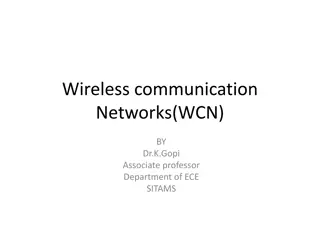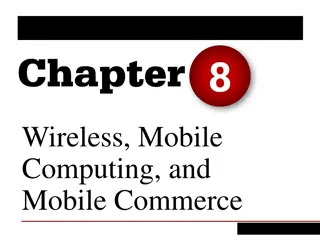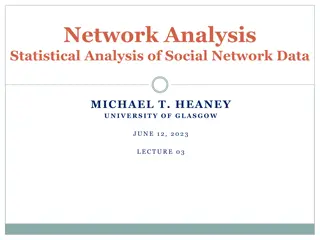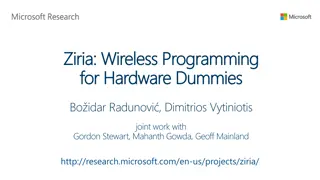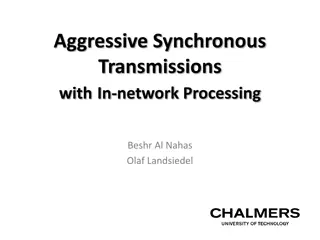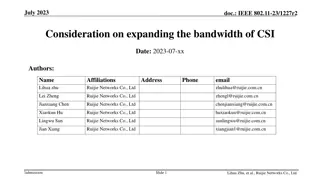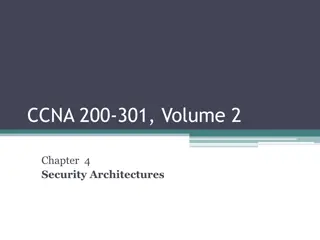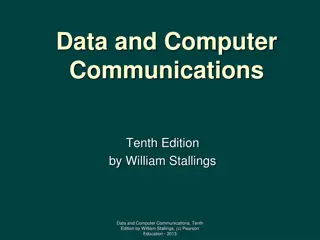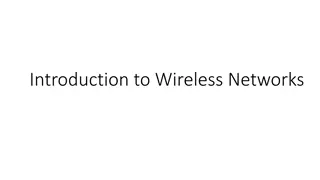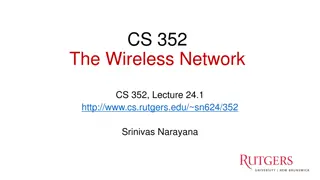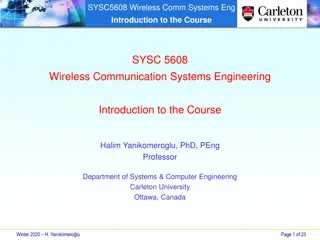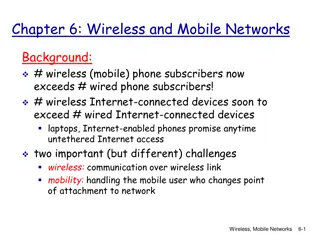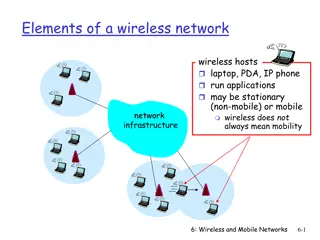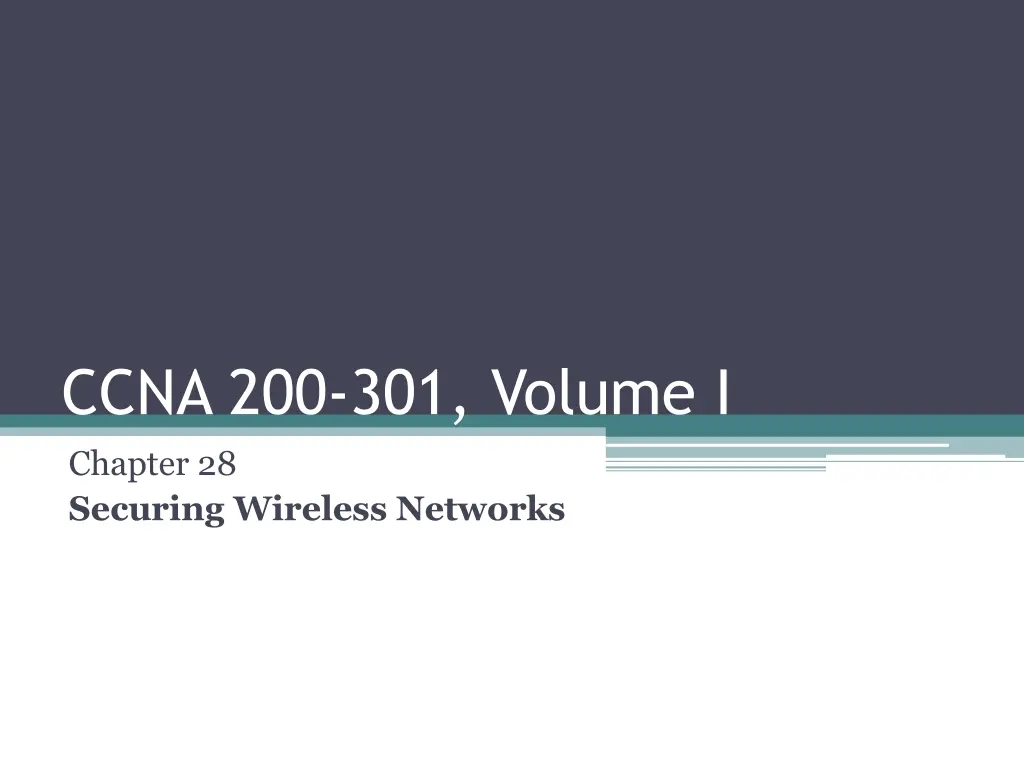
Securing Wireless Networks - Best Practices
Learn about securing wireless networks with topics such as wireless client authentication methods, WPA, WPA2, and WPA3, encrypting wireless data for privacy, message integrity checking, and more. Understand the importance of securing your wireless connections to prevent unauthorized access and protect data privacy.
Download Presentation

Please find below an Image/Link to download the presentation.
The content on the website is provided AS IS for your information and personal use only. It may not be sold, licensed, or shared on other websites without obtaining consent from the author. If you encounter any issues during the download, it is possible that the publisher has removed the file from their server.
You are allowed to download the files provided on this website for personal or commercial use, subject to the condition that they are used lawfully. All files are the property of their respective owners.
The content on the website is provided AS IS for your information and personal use only. It may not be sold, licensed, or shared on other websites without obtaining consent from the author.
E N D
Presentation Transcript
CCNA 200-301, Volume I Chapter 28 Securing Wireless Networks
Objectives Anatomy of a Secure Connection Wireless Client Authentication Methods Wireless Privacy and Integrity Methods WPA, WPA2, and WPA3
Wireless Transmissions Reaching Unintended Recipients
Encrypting Wireless Data to Protect Data Privacy
Checking Message Integrity over a Wireless Network
Open Authentication Open authentication is true to its name; it offers open access to a WLAN. The only requirement is that a client must use an 802.11 authentication request before it attempts to associate with an AP. No other credentials are needed.
WEP WEP uses the RC4 cipher algorithm to make every wireless data frame private and hidden from eavesdroppers. The algorithm uses a string of bits as a key, commonly called a WEP key, to derive other encryption keys one per wireless frame. WEP is known as a shared-key security method.
EAP-FAST The PAC is a form of shared secret that is generated by the AS and used for mutual authentication. EAP- FAST is a sequence of three phases: Phase 0: The PAC is generated or provisioned and installed on the client. Phase 1: After the supplicant and AS have authenticated each other, they negotiate a Transport Layer Security (TLS) tunnel. Phase 2: The end user can then be authenticated through the TLS tunnel for additional security.
TKIP TKIP adds the following security features using legacy hardware and the underlying WEP encryption: MIC: This efficient algorithm adds a hash value to each frame as a message integrity check to prevent tampering; commonly called Michael as an informal reference to MIC. Time stamp: A time stamp is added into the MIC to prevent replay attacks that attempt to reuse or replay frames that have already been sent. Sender s MAC address: The MIC also includes the sender s MAC address as evidence of the frame source. TKIP sequence counter: This feature provides a record of frames sent by a unique MAC address, to prevent frames from being replayed as an attack. Key mixing algorithm: This algorithm computes a unique 128-bit WEP key for each frame. Longer initialization vector (IV): The IV size is doubled from 24 to 48 bits, making it virtually impossible to exhaust all WEP keys by brute- force calculation.
CCMP The Counter/CBC-MAC Protocol (CCMP) is considered to be more secure than TKIP. CCMP consists of two algorithms: AES counter mode encryption Cipher Block Chaining Message Authentication Code (CBC-MAC) used as a message integrity check (MIC)
GCMP The Galois/Counter Mode Protocol (GCMP) is a robust authenticated encryption suite that is more secure and more efficient than CCMP. GCMP consists of two algorithms: AES counter mode encryption Galois Message Authentication Code (GMAC) used as a message integrity check (MIC GCMP is used in WPA3, which is described in the following section.


